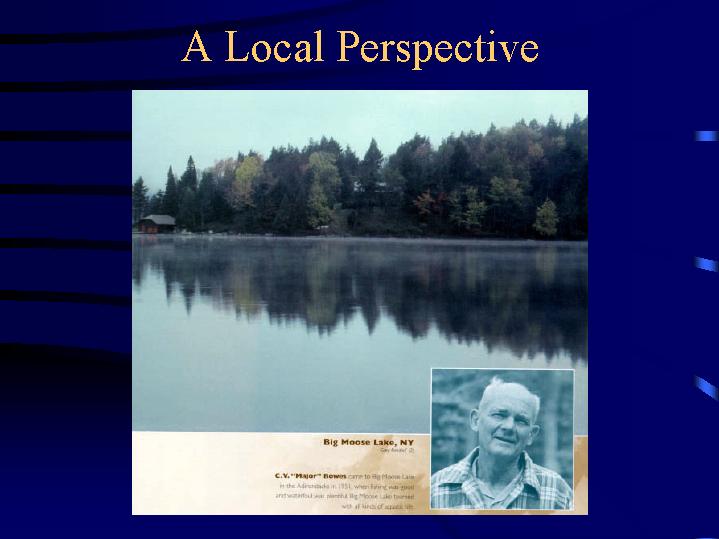|
The effects of acid rain can be studied and documented scientifically, but the Adirondack
Park's devastation is best captured by its longstanding inhabitants who have felt the impact
of its declining state over a lifetime. C.V. Bowes came to Big Moose Lake in 1951 when fishing
was plentiful and the waterfoul was densely populated. He describes trophy-sized trout and
abundances of crayfish, freshwater shrimp, frogs, hooded mergansers and otters that filled
the Lake. By 1980, however, the Lake that once teemed with life, was lucky to have sparse
populations of any species in its waters. In addition, tests show that the water contains
five times as much lead and copper as is deemed safe for human consumption.
|
